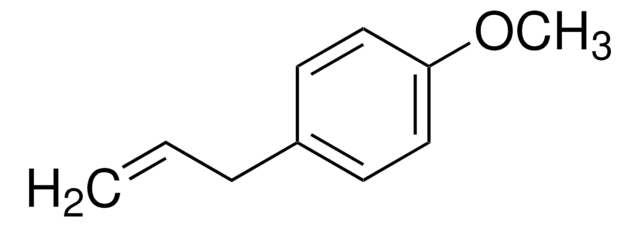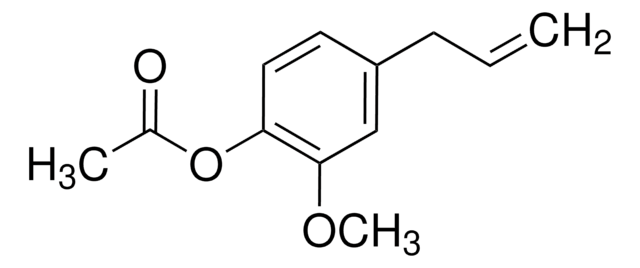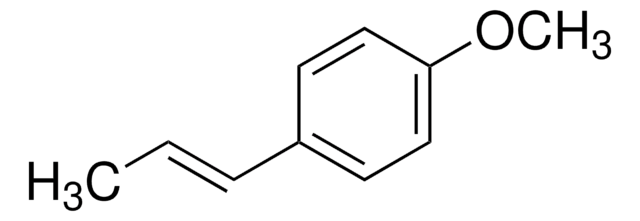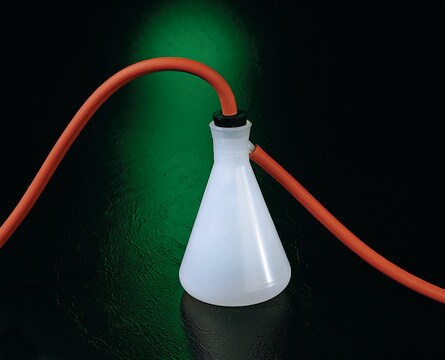W241105
4-Allylanisole
≥98%, FCC
동의어(들):
p-Allylphenyl methyl ether, p-Methoxyallylbenzene, Chavicol methyl ether, Estragole, Isoanethole, Methyl chavicol
About This Item
추천 제품
생물학적 소스
synthetic
Quality Level
Grade
Fragrance grade
Halal
Kosher
Agency
follows IFRA guidelines
규정 준수
EU Regulation 1223/2009
FCC
FDA 21 CFR 117
FDA 21 CFR 172.515
분석
≥98%
구성
Contains IFRA restricted 4-Allylanisole
refractive index
n20/D 1.521 (lit.)
bp
215-216 °C (lit.)
density
0.965 g/mL at 25 °C (lit.)
응용 분야
flavors and fragrances
문건
see Safety & Documentation for available documents
식품 알레르기항원
no known allergens
향수 알레르기항원
no known allergens
감각 수용성의
anise; green; spicy; herbaceous; minty; sweet
SMILES string
COc1ccc(CC=C)cc1
InChI
1S/C10H12O/c1-3-4-9-5-7-10(11-2)8-6-9/h3,5-8H,1,4H2,2H3
InChI key
ZFMSMUAANRJZFM-UHFFFAOYSA-N
유사한 제품을 찾으십니까? 방문 제품 비교 안내
면책조항
신호어
Warning
유해 및 위험 성명서
Hazard Classifications
Acute Tox. 4 Oral - Aquatic Chronic 3 - Carc. 2 - Eye Irrit. 2 - Muta. 2 - Skin Irrit. 2 - Skin Sens. 1
Storage Class Code
10 - Combustible liquids
WGK
WGK 2
Flash Point (°F)
177.8 °F - closed cup
Flash Point (°C)
81 °C - closed cup
개인 보호 장비
Eyeshields, Faceshields, Gloves, type ABEK (EN14387) respirator filter
이미 열람한 고객
Global Trade Item Number
| SKU | GTIN |
|---|---|
| W241105-5KG | |
| W241105-SAMPLE | |
| W241105-SAMPLE-K | 4061837512162 |
| W241105-10KG | |
| W241105-10KG-K | |
| W241105-1KG | |
| W241105-1KG-K | 4061838256942 |
| W241105-5KG-K | 4061838107985 |
자사의 과학자팀은 생명 과학, 재료 과학, 화학 합성, 크로마토그래피, 분석 및 기타 많은 영역을 포함한 모든 과학 분야에 경험이 있습니다..
고객지원팀으로 연락바랍니다.











